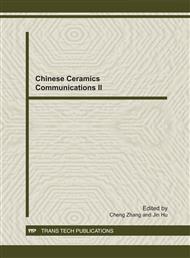p.146
p.150
p.155
p.159
p.163
p.167
p.171
p.175
p.179
Hydrothermal Synthesis, Photoluminescence Property and Superhydrophobicity of In(OH)3
Abstract:
In this work, we fabricated indium hydroxide (In (OH)3) nanocubes from In (NO3)3 and urea through hydrothermal method. NH4OH form the hydrolysis of urea acts as the OH¯ provider. The resultant products were characterized by X-ray diffraction (XRD), scanning electronic microscope (SEM), photoluminescence (PL) spectra and contact angle meter. It was observed that the In (OH)3 nanocubes showed superhydrophobicity with water contact angle 161.9° after modified with fluoroalkylsilane (FAS, CF3(CF2)7CH2CH2Si (OCH3)3), and exhibited PL peak at about 529 nm, corresponding to the deep level emission.
Info:
Periodical:
Pages:
163-166
Citation:
Online since:
November 2011
Authors:
Keywords:
Price:
Сopyright:
© 2012 Trans Tech Publications Ltd. All Rights Reserved
Share:
Citation:


